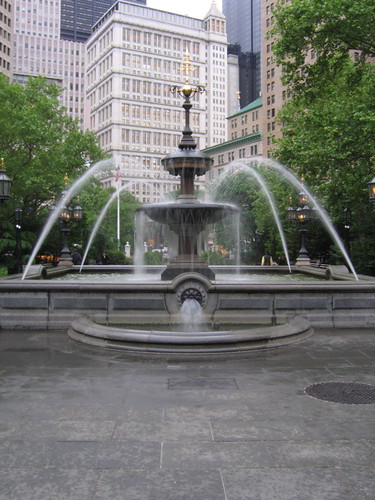
Thomas Dongan, the Irish Catholic and Royalist also known as the Second Earl of Limerick, was provincial governor of New York from 1684-1688. He is remarkable for two things; he permitted Catholics to enter the royal colony when he called New York's first legislative assembly, which issued the colony's Charter of Liberties, and he cut a road through the Common on its east side, in effect creating the street presently known as Park Row. He thus anticipated, and hastened the city's development to the north and east.
The Common was considerably wider than it is today. It splayed out beyond Broadway on the west and petered out on the east into a swamp that connected with the Collect Pond, which began at Foley Square and stretched northeast. Today, Dongan's farmer's road feeds traffic into Centre Street one-way north past the Municipal Building.
One would like to think Dongan's religious toleration grew out of egalitarian Englightenment principles. One would like to think his addition of a northeast road grew from his wise foresight of the city's development. The reality is somewhat more prosaic, as it all too often is. By tolerating Catholics, Dongan brought the first wave of cheap immigrant labor into New York. In truth, he had little in common with the Irish Catholics whose toleration he championed except that he was born in Ireland. Dongan was a thoroughgoing Irish aristocrat and a Royalist during the English Civil War. His best friend was James, the Duke of York, and (coincidentally?) the road the Irish laborers Dongan brought into the city constructed also facilitated access to Dongan's own farm.
Dongan also held two Long Island townships by royal patent, East Hampton and Southampton. The patents that established the municipal governing procedures that these towns employ today grew directly from the so-called Dongan Patents.

